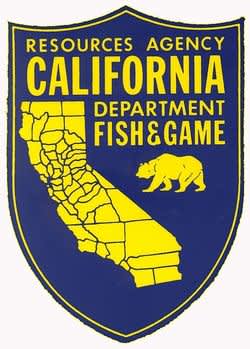California Outdoors Q&As: Do Crippled Birds Add to My Bag Limit?

Do Crippled Birds Add to My Bag Limit?
Question: I was informed that a downed crippled bird that was not recovered, even though a true effort was made to find the downed bird, still counts toward your bag limit. Where is this stated in the regulations? (Aaron W.)
Answer: It is not in regulation. It is an ethical hunter issue. Ethical hunters will make every attempt to find a downed bird. Even if that bird is never located but the hunter knows it was hit, the ethical hunter will still count it towards their bag limit. Ethical hunters do what is right even when they think no one’s looking.
Fishing and retrieving lobster hoop nets
Question: I understand that each person that drops a hoop net must be the same person that retrieves it. How is this going to be monitored? If we have four people in the boat and 10 nets, are we supposed to somehow mark each net to distinguish whose is whose? (Bill J.)
Answer: The law states that the owner of the hoop net or the person who placed the hoop net into the water shall raise the hoop net to the surface and inspect the contents of the hoop net at intervals not to exceed two hours.
According to Department of Fish and Game (DFG) Lt. Eric Kord, the intent of this law is to require a minimum checking interval of every two hours at least by whoever placed the net in the water and not to cite somebody for pulling up their buddy’s net. Wardens understand if you are working together as a team, but any net placed into the water is your responsibility to raise and inspect every two hours. Depending on someone else to do that for you may result in you receiving a citation if they fail to comply with this requirement.
Filleting salmon on board
Question: Can a private fisherman filet a fresh-caught salmon on the Sacramento River while retaining the carcass? I ask because I am of the opinion the salmon is not a size or weight limit fish. Does this change the answer? (Leslie G.)
Answer: You are correct that there is no minimum size or weight for salmon caught in the Sacramento River as there is in the Klamath River and ocean. This means Fish and Game Code, section 5508, does not prohibit anglers from filleting salmon caught from the Sacramento River. However, Fish and Game Code, section 5509 provides it is unlawful to possess on any boat or to bring ashore any fish in such a condition that the species cannot be determined. Since there are multiple species and runs of salmonids in the Sacramento River, and it is difficult to determine which is which based only on fillets, anglers shouldn’t filet salmon until they are ashore.
Anglers taking salmon from the shore are not affected by this prohibition and not restricted from filleting their catch. Retention of the carcass is not required.
What to do with old abalone shells?
Question: I know that abalone shells may not be sold, but what about shells found on private residential property? In this case, abalone shells had been used for landscape decoration and were removed in a clean up of that property. Can they be sold or given away? What about buying abalone shells from retail shops such as those located on Fisherman’s Wharf in San Francisco or other retail tourist destinations where they display these shells for sale? If someone does buy a shell from one these tourist shops, would the purchaser be violating any DFG regulation for that purchase and possession? Does the Lacey Act of 1900 apply?
What do private citizens do if in fact they encounter abalone shells that have been used for landscape decoration and are in the ground and have been for some years? What about unsuspecting people who obtain shells at a retail tourist shop? How do they ensure they do not inadvertently run afoul of any DFG regulation? (Dr. Thomas G.P. Luparello, D.C. (Ret.))
Answer: California fish and game laws that protect abalone apply to all parts of the fish, including the shell. Under these laws, shells of sport-caught abalone may not be sold.
However, there are many abalone fisheries throughout the world, there was a commercial abalone fishery in California until 1993 and abalone are lawfully produced and sold by aquaculture facilities. The prohibition on selling sport-caught abalone shells does not apply to the shells of these abalone.
Additional information regarding this valuable and vulnerable resource is available online at www.dfg.ca.gov/marine/invertebrate/abalone.asp.

